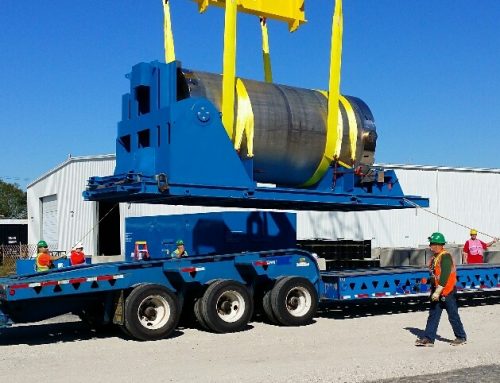Wire Rope Slings (ASME B30.9)
A wire rope sling shall be removed from service if conditions such as the following are present:
- Missing or illegible sling identification.
- Broken Wires:
- Severe localized abrasion or scraping.
- Kinking, crushing, bird caging, or any other damage resulting in damage to the rope structure.
- Evidence of heat damage.
- End attachments that are cracked, deformed, or worn to the extent that the strength of the sling is substantially affected.
- Severe corrosion of the rope, end attachments, or fittings.
- For hooks, removal criteria as stated in ASME B30.10.
- For rigging hardware, removal criteria as stated in ASME B30.26
- Other conditions, including visible damage, that cause doubt as to the continued use of the sling.
*For strand-laid and single-part slings, 10 randomly distributed broken wires in one rope lay, or 5 broken wires in one strand in one rope lay.
*For cable-laid slings, 20 broken wires per lay.
*For less than eight-part braided slings, 20 broken wires per braid.
*For eight-part or more than eight braided slings, 40 broken wires per braid.
Nylon Web Slings (ASME B30.9) – A synthetic web sling shall be removed from service if conditions such as the following are present:
- Missing or illegible sling identification.
- Acid or caustic burns.
- Melting or charring of any part of the sling.
- Holes, tears, cuts, or snags.
- Broken or worn stitching in load bearing splices.
- Excessive abrasive wear.
- Knots in any part of the sling.
- Discoloration & brittle or stiff areas on any part of the sling, may mean chemical or ultraviolet/sunlight damage.
- Fittings that are pitted, corroded, cracked, bent, twisted, gouged, or broken.
- For hooks, removal criteria as stated in ASME B30.10.
- For rigging hardware, removal criteria as stated in ASME B30.26
- Other conditions, including visible damage, that cause doubt as to the continued use of the sling.
Polyester Round Slings (ASME B30.9) – A synthetic round sling shall be removed from service if conditions such as the following are present:
- Missing or illegible sling identification.
- Acid or caustic burns.
- Evidence of heat damage.
- Holes, tears, cuts, abrasive wear, or snags that expose the core yarns.
- Broken or damaged core yarns.
- Weld splatter that exposes core yarns.
- Knots in the roundslings, except for core yarns inside the cover.
- Fittings that are pitted, corroded, cracked, bent, twisted, gouged, or broken.
- For hooks, removal criteria as stated in ASME B30.10.
- For rigging hardware, removal criteria as stated in ASME B30.26.
- Other conditions, including visible damage, that may cause doubt as to the continued use of the sling.
Alloy Steel Chain Slings(ASME B30.9) – An alloy steel chain sling shall be removed from service if conditions such as the following are present:
- Missing or illegible sling identification.
- Cracks or breaks
- Excessive wear, nicks, or gouges.
- Stretched chain links or components
- Bent, twisted, or deformed chain links or components.
- Evidence of heat damage.
- Excessive pitting or corrosion.
- Lack of ability of chain or components to hinge (articulate) freely.
- Weld splatter.
- For hooks, removal criteria as stated in ASME B30.10
- For rigging hardware, removal criteria as stated in ASME B30.26
- Other conditions, including visible damage, that cause doubt as to the continued use of the sling.
Wire Mesh Slings (ASME B30.9) – A metal mesh sling shall be removed from service if conditions such as the following are present:
- Missing or illegible sling identification.
- Broken weld or a broken brazed joint along the sling edge
- Broken wire in any part of the mesh.
- Reduction in wire diameter of 25% due to abrasion or 15% due to corrosion.
- Lack of flexibility due to distortion of the mesh.
- Distortion of the choker fitting so the depth of the slot is increased by more that 10%
- Distortion of either end fitting so the width of the eye opening is decreased by more than 10%
- A 15% reduction of the original cross-sectional area of any point around the hook opening of the end fitting.
- Visible distortion of either end fitting out of its plane.
- Cracked end fitting.
- Slings in which the spirals are locked or without free articulation shall not be used.
- Fitting that are pitted, corroded, cracked, bent, twisted, gouged, or broken.
- Other conditions, including visible damage, that cause doubt as to the continued use of the sling.



